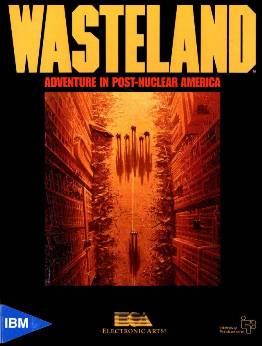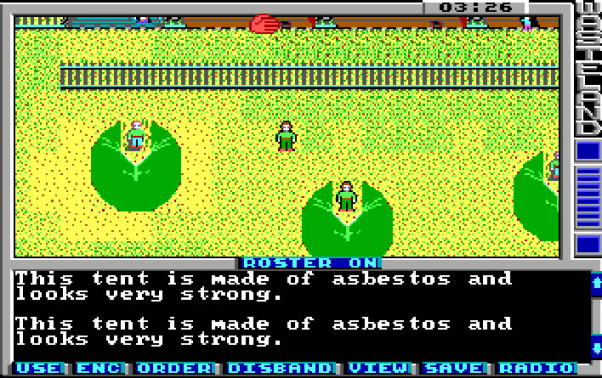
Developer: Interplay Productions/inXile Entertainment
Publisher: Electronic Arts/inXile Entertainment
Platform: PC – GOG*, Steam
Wasteland is one of those games that everyone knows about, but as time drags on, less of us have played. As is the case with me, I had never before ventured into the title before despite knowing how important it was to the development of modern series like Fallout. Playing it now proves an incredibly difficult experience.
I don’t mean simply in the level of challenge enemies provide, but simply in controlling the game. Of course, Wasteland is also damn hard in the former respect as well. That’s the way a lot of people like it! My playthrough was a very strenuous one even when guided by extraneous FAQs. So much is going on as you play and one must always be aware of the consequences of their actions.

Wasteland itself takes places in a post-apocalyptic world. You play as a group of rangers who must venture through the land and hopefully survive the adventure. Starting out with a group is necessary since you’ll suffer casualties for sure. Even if every ranger dies though, the effects of their actions will remain in place. World persistence was one of the biggest surprises of the game for me. So too, was the vicious nature of the language.
This is the wasteland, after all, so bad things happen. You can kill children, contract STDs, or explode like a blood sausage. The writing is key here, and still stands up to the test of time. Of course, all the writing isn’t within the game. There are journals and other pieces to read that came with the game itself upon release. Now you can get these necessary manuals and booklets as scanned PDFs when purchasing from GOG. Unfortunately, I’m unaware if Steam includes them as well. They had better because some of this information is very important.
The biggest hangups I had with playing focused on not knowing what to do nor how to really control battles. Things eventually worked themselves out, but the game still requires a lot of menus and such to navigate. Included is a macro system which allows players to set their own keys, but it seemed like too much work for one game.

Wasteland 1 – The Original Classic is the name given to this recent re-release of the game. They have updated the portraits and also instituted some sort of pixel smoothing filter. Thankfully, you can turn these features off if you wish. In particular, the smoothed text was quite frankly disgusting. There’s no reason inXile Entertainment should fear the pixelated nature of their product. Anyone seriously taking the time to play is likely a fan of the graphics anyway.
Although I recognize Wasteland as a touchstone title in the history of video games, I find it an incredibly tough game to enjoy. Perhaps it’s not even about enjoyment but pushing skill to the limit. In any case, it would be hard to get many modern gamers to sit down and play through it. Tastes have changed, after all.

3 out of 5 alpacas
Review code provided
About our rating system – *Affiliate link